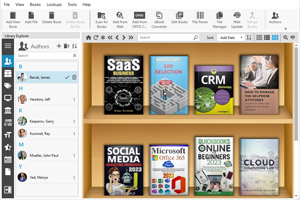4 books on Electronic Signature [PDF]
Updated: February 09, 2024 | 29 |
Books on Electronic Signature are essential resources for Electronic Signature startups, offering profound insights and strategic guidance in the rapidly evolving world of digital document signing and authentication. These resources provide a comprehensive understanding of electronic signature technologies, legal compliance, and best practices, empowering startups with the knowledge and expertise needed to develop secure, efficient, and user-friendly electronic signature solutions. They delve into critical aspects such as eIDAS regulation, biometric authentication, and integration with document management systems, enabling startups to create platforms that facilitate seamless and legally binding electronic signatures for businesses and individuals. Furthermore, these books often explore emerging trends like blockchain-based signatures and remote online notarization, ensuring startups remain innovative and competitive in the ever-evolving electronic signature technology landscape.
1. Provisions of Electronic Signatures in International Contracts
2020 by Mahmoud Refaat

The objective of this chapter is to contextualize the concept of a signature within a broad legal framework, delineating the attributed purposes and functions of a signature. To comprehend the nature of an electronic signature, it is essential to grasp the functions a signature is capable of performing and understand how judicial responses have evolved in tandem with technological advancements over the years. The chapter provides a succinct historical overview of how judges have adapted to technological changes and the diverse methods employed to signify a signature. Despite the evolution of technology, the fundamental function of a signature remains relevant in the electronic age, comparable to an era when an impression of a seal served as the primary means of authentication. The discussion encompasses cases related to statutes that may have undergone changes, emphasizing the persistent challenges faced by lawyers and judges. In addressing these challenges, judges have consistently applied fundamental legal principles to adapt to new technological forms, underscoring the enduring relevance of legal principles even in the face of technological evolution.
Download PDF
2. Electronic Signatures for B2B Contracts: Evidence from Australia
2012 by Aashish Srivastava

Over the past centuries, traditional paper-based documents and handwritten signatures have been the predominant method for businesses formalizing contractual relationships. The rise of the Internet has opened the possibility of transitioning from paper to electronic contracts in the B2B domain, contingent upon appropriate technology and supportive legislation. This shift holds the potential for business executives to execute multi-million dollar deals through electronic signatures from their computer screens. Legislatively, various national and international laws have been enacted to confer legal recognition upon such contracts. Drawing from an empirical study on large publicly listed Australian companies, this book examines business perceptions regarding the adoption of electronic signatures in B2B contracts. It identifies six key factors that deter businesses from transitioning from traditional paper signatures to the innovative realm of electronic signatures. Providing valuable insights for legal practitioners, academics, and businesses, the book suggests measures to encourage the widespread adoption of electronic signatures in B2B contracts.
Download PDF
3. Electronic Signatures in Law
2012 by Stephen Mason

Electronic signatures have become pervasive, touching various aspects of daily life, from email communications to credit card transactions. Their impact on all areas of law necessitates that lawyers advise clients on their legal implications. In its third edition, this book offers a comprehensive exploration of electronic signatures, encompassing discussions on their definitions, various forms, and issues related to evidence, contract formation, and negligence. The analysis extends to case law from diverse common law and civil law jurisdictions, providing insights into how judges have historically addressed technological changes and how the legal framework has adapted in response. Lawyers and legal professionals will find this edition a valuable resource for navigating the complex landscape of electronic signatures in law.
Download PDF
4. Digital Signatures
2010 by Jonathan Katz

As a novice graduate student, I encountered frustration due to a scarcity of accessible resources for delving into theoretical cryptography. The question lingered: why aren't there more introductory-level books on the basics of cryptography? Fast forward nearly a decade, and now as a faculty member, my own graduate students inquire about the best resources for learning various cryptography topics. This monograph aims to address these queries, particularly regarding digital signature schemes. Tailored for beginning graduate students interested in cryptography research, who have completed an introductory course but seek further guidance, this book also holds relevance for advanced graduate students and researchers. Beyond presenting diverse constructions of digital signature schemes within a unified framework, the text serves as a compendium of lesser-known "folklore" results. It could also function as a textbook for a graduate seminar on advanced cryptography, allowing the material to be covered leisurely in one semester, possibly leaving room for explorations into related subjects.
Download PDF
How to download PDF:
1. Install Google Books Downloader
2. Enter Book ID to the search box and press Enter
3. Click "Download Book" icon and select PDF*
* - note that for yellow books only preview pages are downloaded
1. Provisions of Electronic Signatures in International Contracts
2020 by Mahmoud Refaat

The objective of this chapter is to contextualize the concept of a signature within a broad legal framework, delineating the attributed purposes and functions of a signature. To comprehend the nature of an electronic signature, it is essential to grasp the functions a signature is capable of performing and understand how judicial responses have evolved in tandem with technological advancements over the years. The chapter provides a succinct historical overview of how judges have adapted to technological changes and the diverse methods employed to signify a signature. Despite the evolution of technology, the fundamental function of a signature remains relevant in the electronic age, comparable to an era when an impression of a seal served as the primary means of authentication. The discussion encompasses cases related to statutes that may have undergone changes, emphasizing the persistent challenges faced by lawyers and judges. In addressing these challenges, judges have consistently applied fundamental legal principles to adapt to new technological forms, underscoring the enduring relevance of legal principles even in the face of technological evolution.
Download PDF
2. Electronic Signatures for B2B Contracts: Evidence from Australia
2012 by Aashish Srivastava

Over the past centuries, traditional paper-based documents and handwritten signatures have been the predominant method for businesses formalizing contractual relationships. The rise of the Internet has opened the possibility of transitioning from paper to electronic contracts in the B2B domain, contingent upon appropriate technology and supportive legislation. This shift holds the potential for business executives to execute multi-million dollar deals through electronic signatures from their computer screens. Legislatively, various national and international laws have been enacted to confer legal recognition upon such contracts. Drawing from an empirical study on large publicly listed Australian companies, this book examines business perceptions regarding the adoption of electronic signatures in B2B contracts. It identifies six key factors that deter businesses from transitioning from traditional paper signatures to the innovative realm of electronic signatures. Providing valuable insights for legal practitioners, academics, and businesses, the book suggests measures to encourage the widespread adoption of electronic signatures in B2B contracts.
Download PDF
3. Electronic Signatures in Law
2012 by Stephen Mason

Electronic signatures have become pervasive, touching various aspects of daily life, from email communications to credit card transactions. Their impact on all areas of law necessitates that lawyers advise clients on their legal implications. In its third edition, this book offers a comprehensive exploration of electronic signatures, encompassing discussions on their definitions, various forms, and issues related to evidence, contract formation, and negligence. The analysis extends to case law from diverse common law and civil law jurisdictions, providing insights into how judges have historically addressed technological changes and how the legal framework has adapted in response. Lawyers and legal professionals will find this edition a valuable resource for navigating the complex landscape of electronic signatures in law.
Download PDF
4. Digital Signatures
2010 by Jonathan Katz

As a novice graduate student, I encountered frustration due to a scarcity of accessible resources for delving into theoretical cryptography. The question lingered: why aren't there more introductory-level books on the basics of cryptography? Fast forward nearly a decade, and now as a faculty member, my own graduate students inquire about the best resources for learning various cryptography topics. This monograph aims to address these queries, particularly regarding digital signature schemes. Tailored for beginning graduate students interested in cryptography research, who have completed an introductory course but seek further guidance, this book also holds relevance for advanced graduate students and researchers. Beyond presenting diverse constructions of digital signature schemes within a unified framework, the text serves as a compendium of lesser-known "folklore" results. It could also function as a textbook for a graduate seminar on advanced cryptography, allowing the material to be covered leisurely in one semester, possibly leaving room for explorations into related subjects.
Download PDF
How to download PDF:
1. Install Google Books Downloader
2. Enter Book ID to the search box and press Enter
3. Click "Download Book" icon and select PDF*
* - note that for yellow books only preview pages are downloaded


